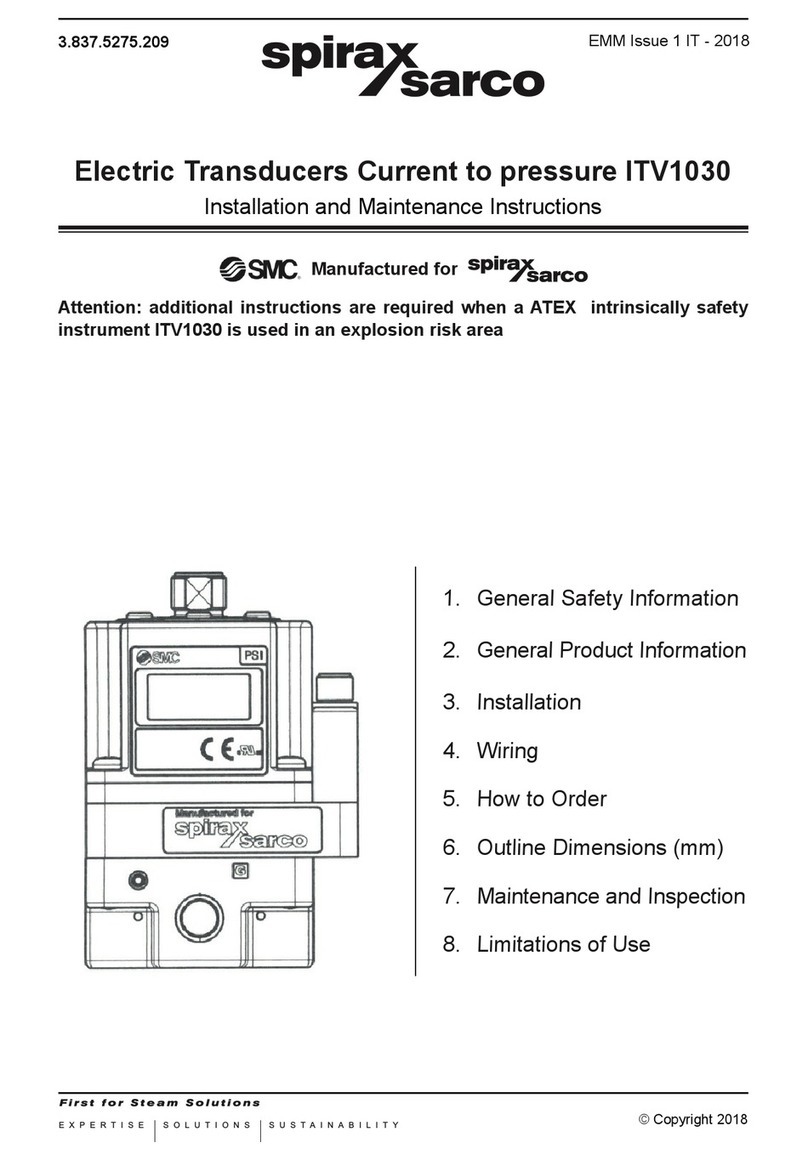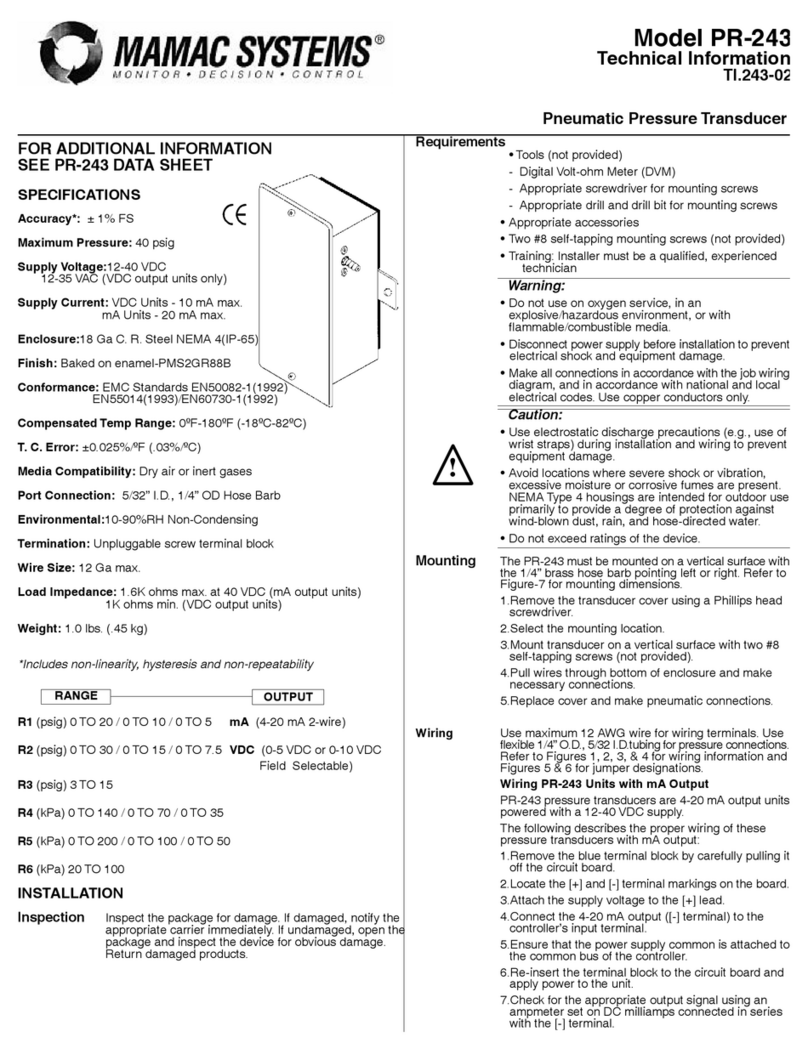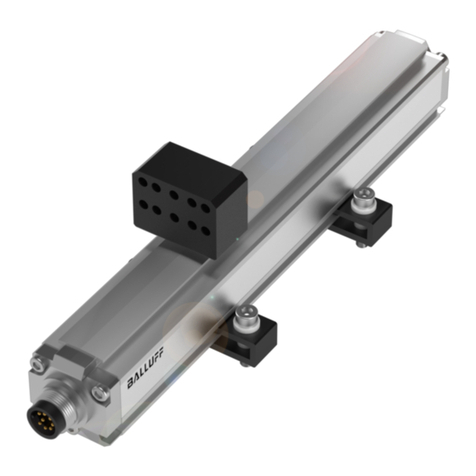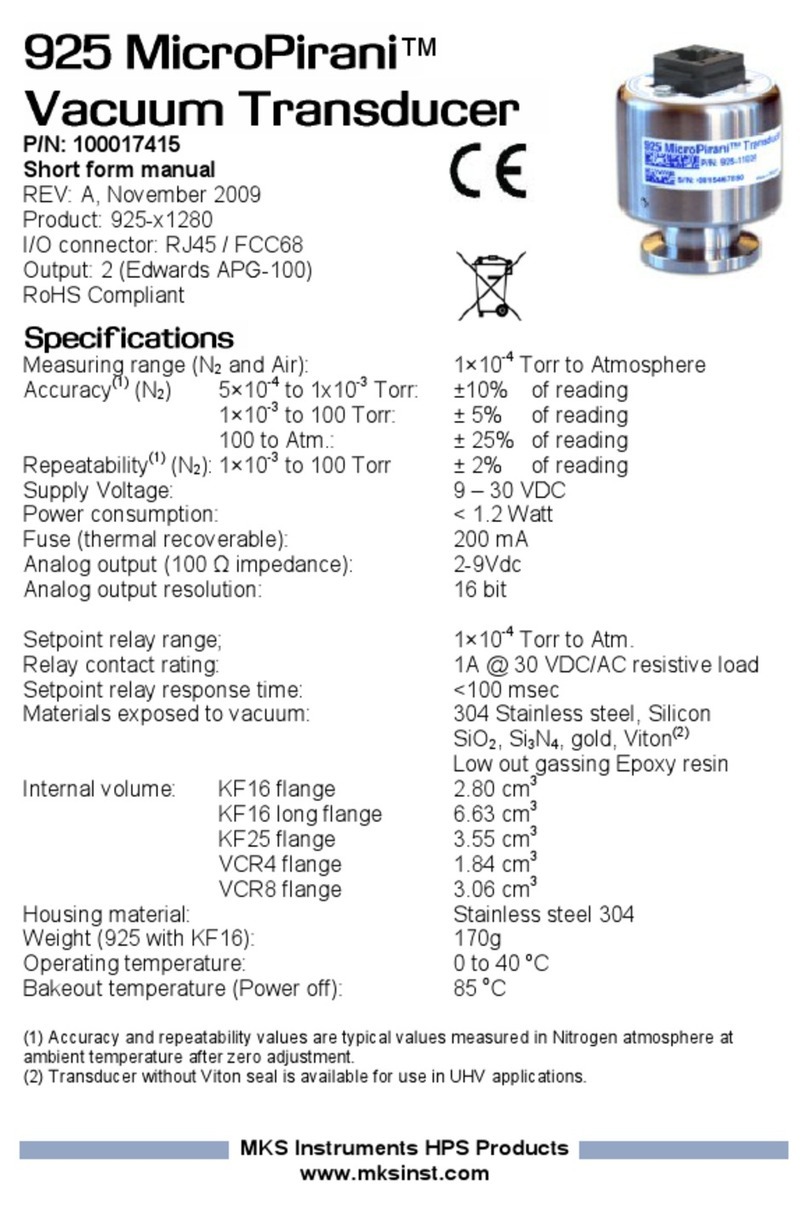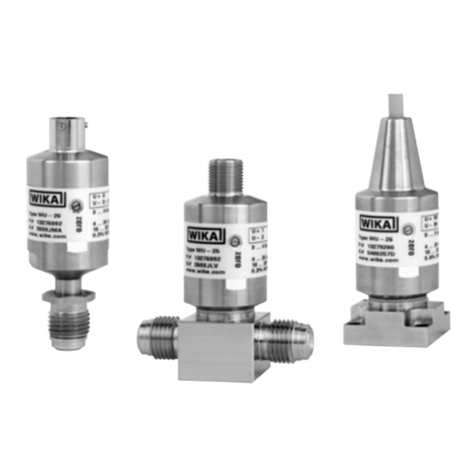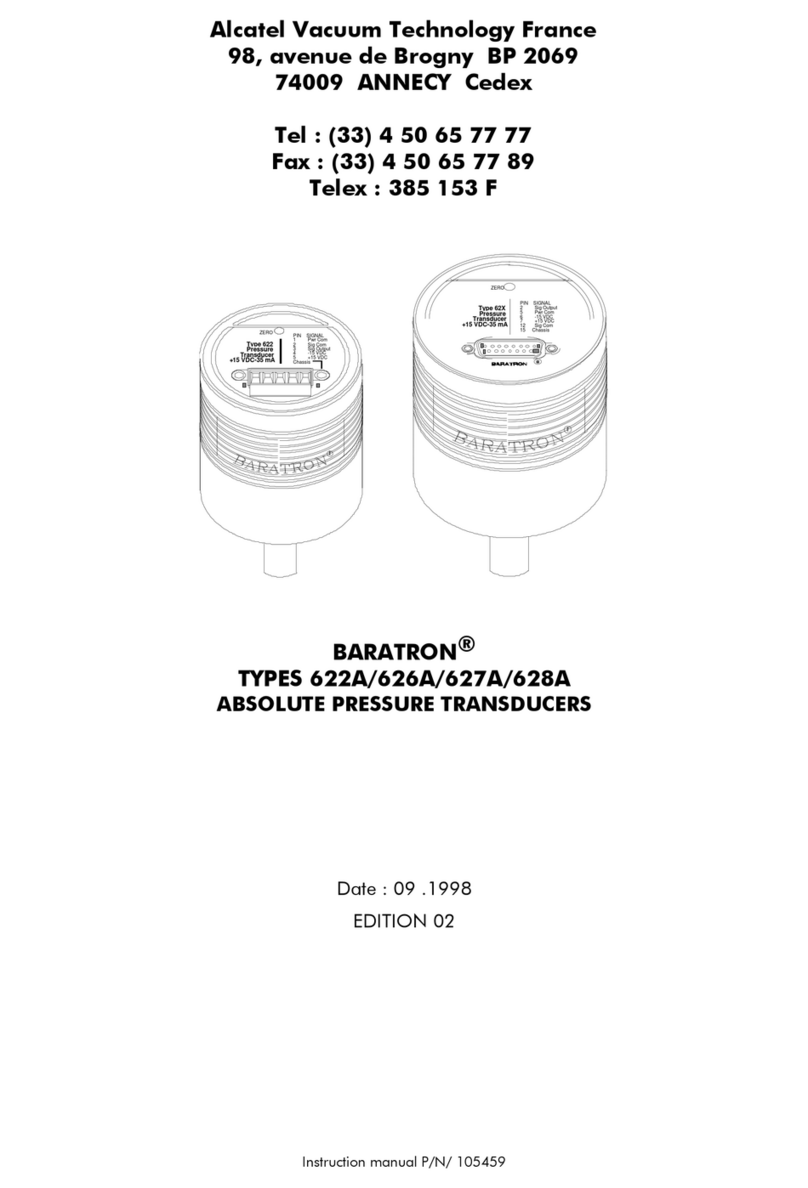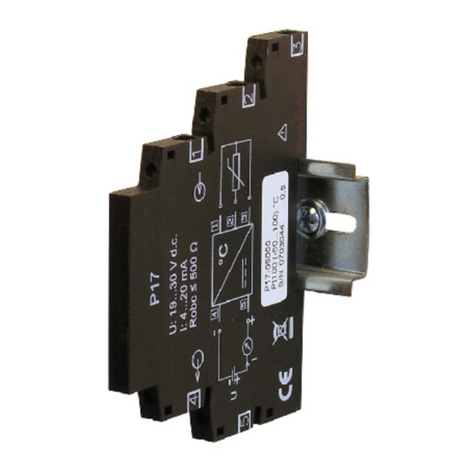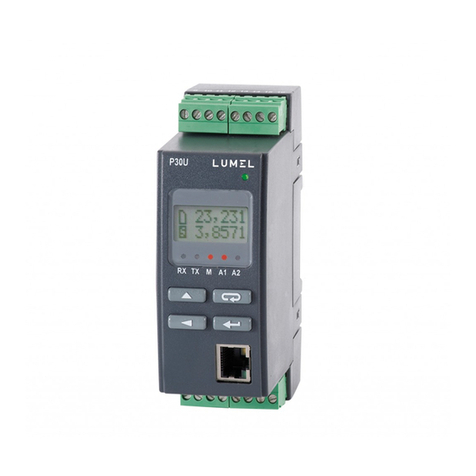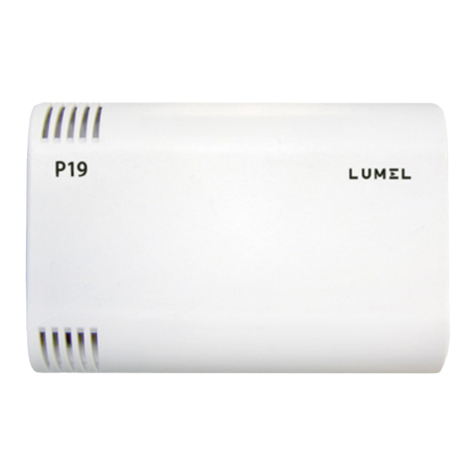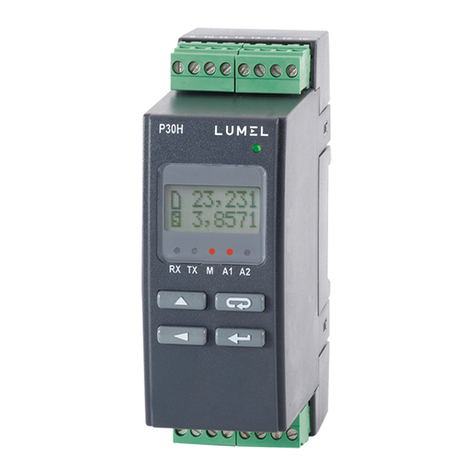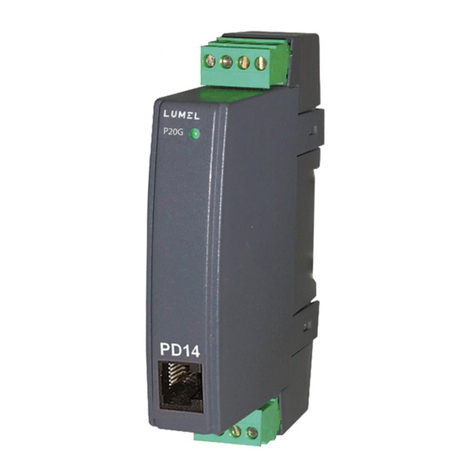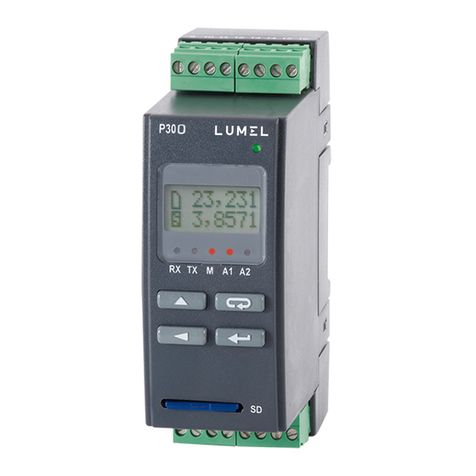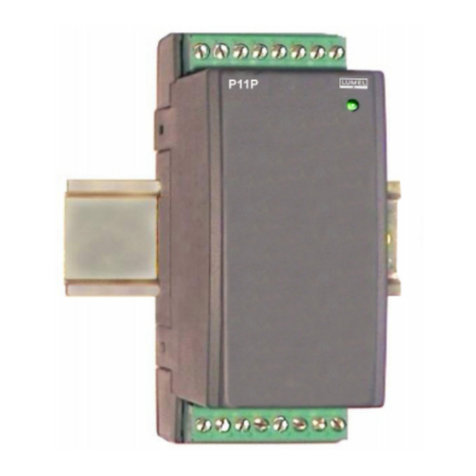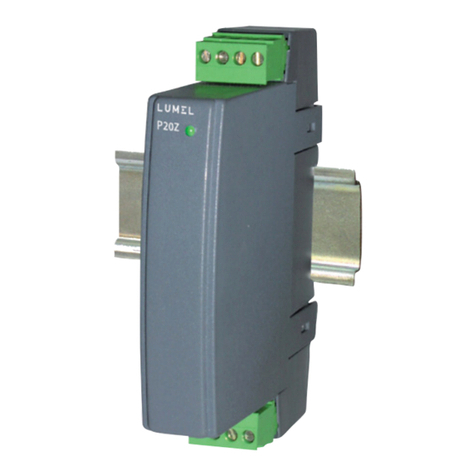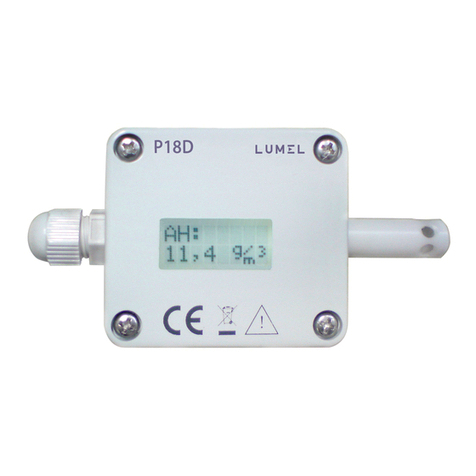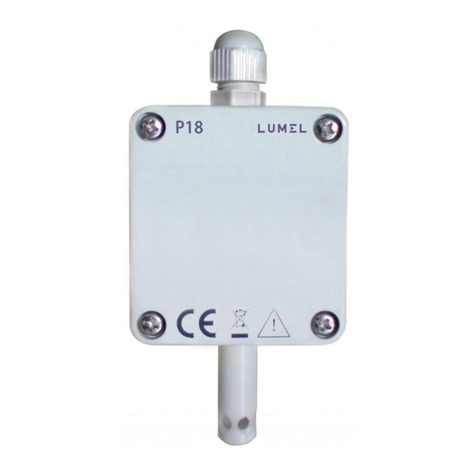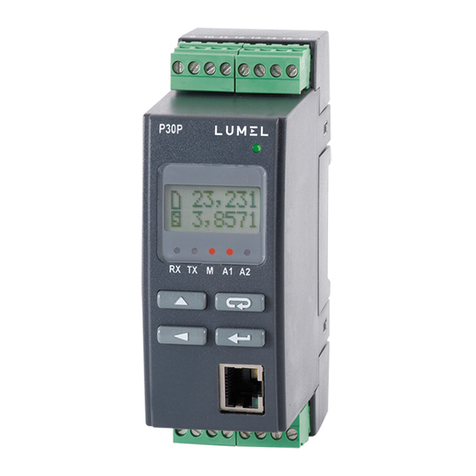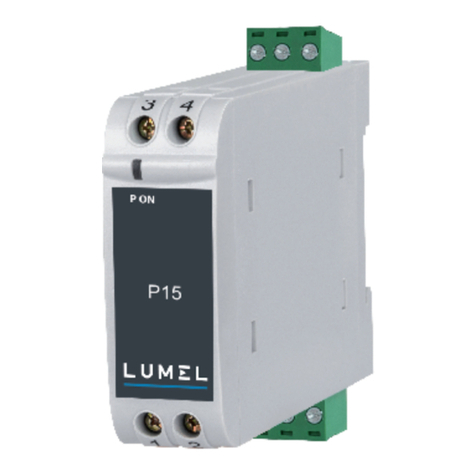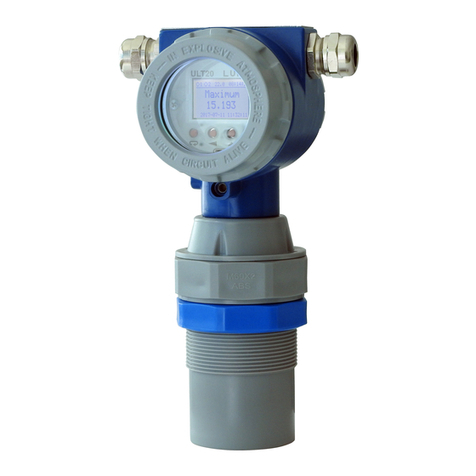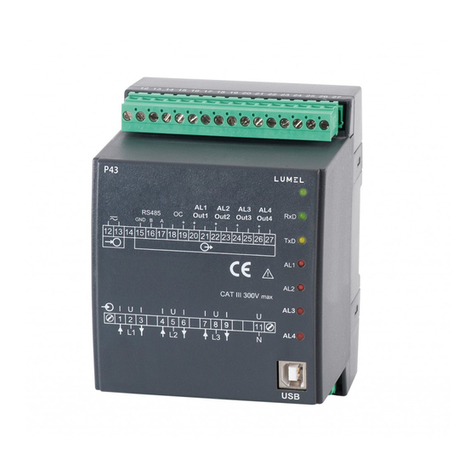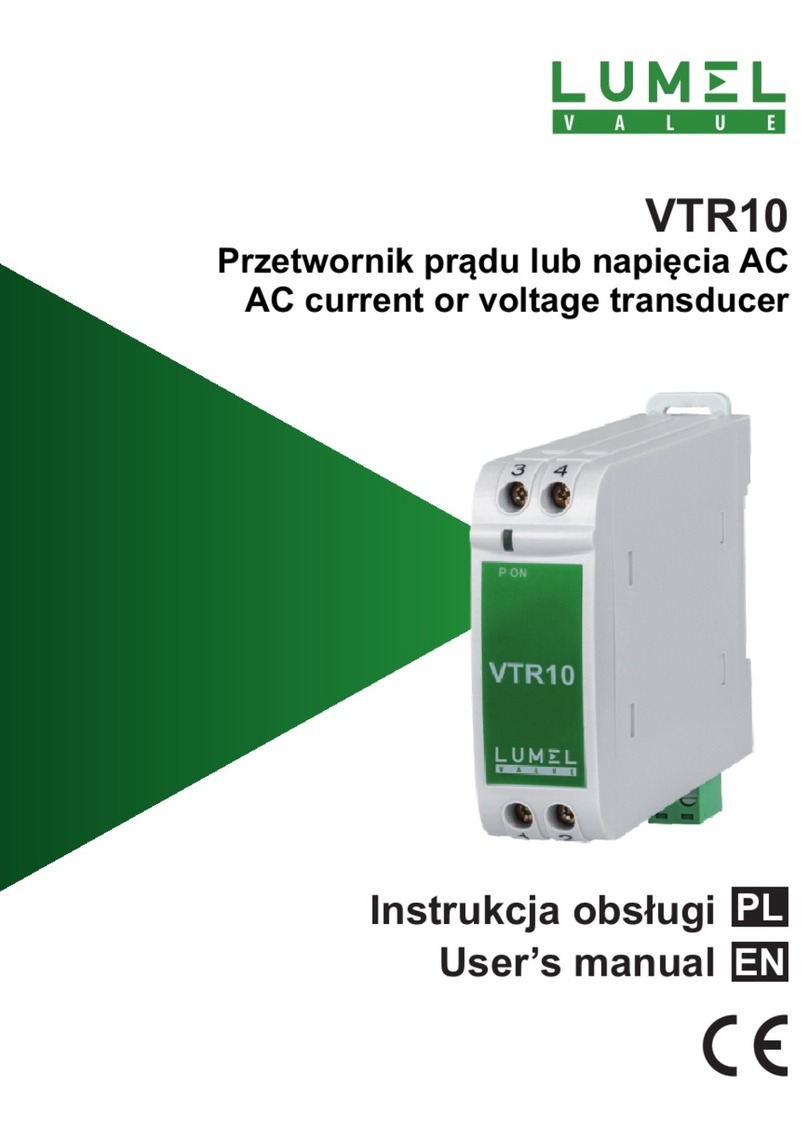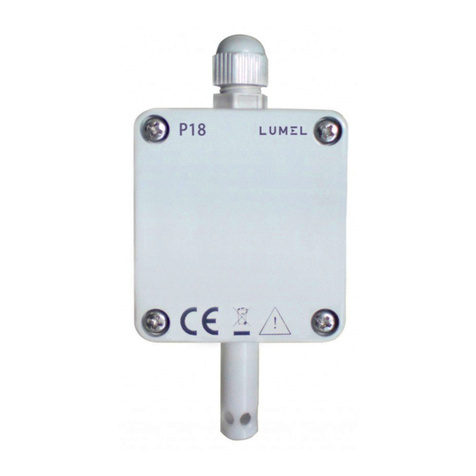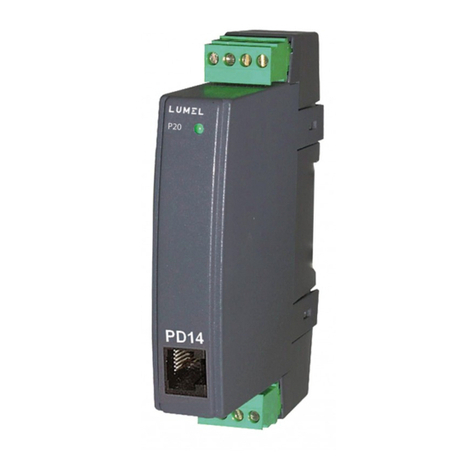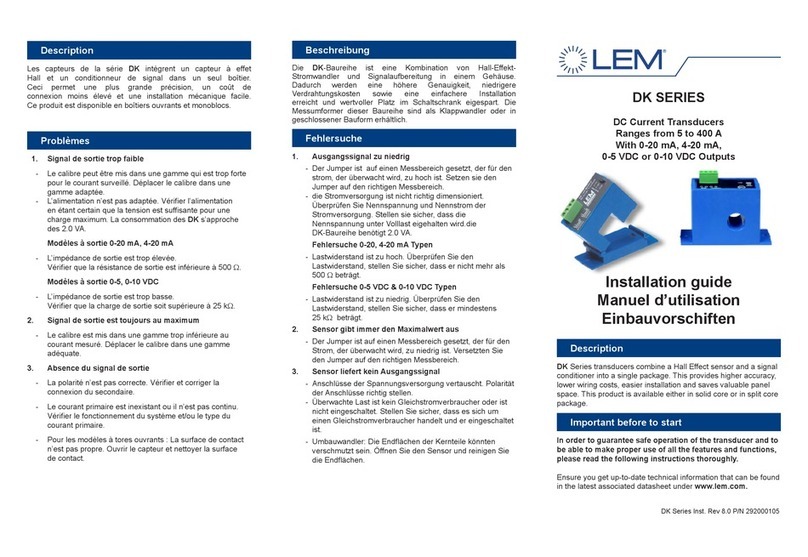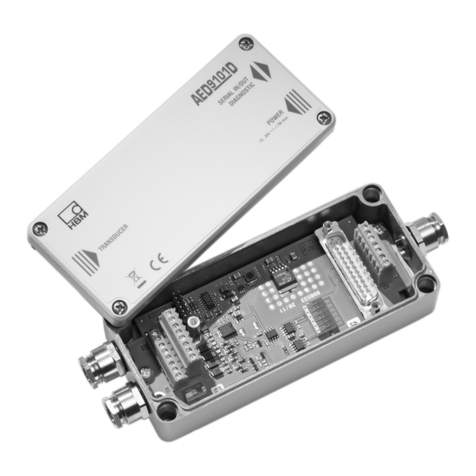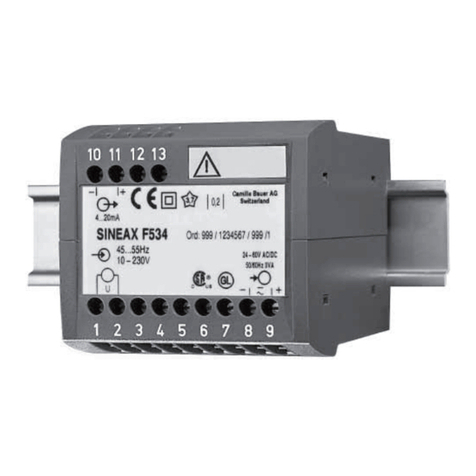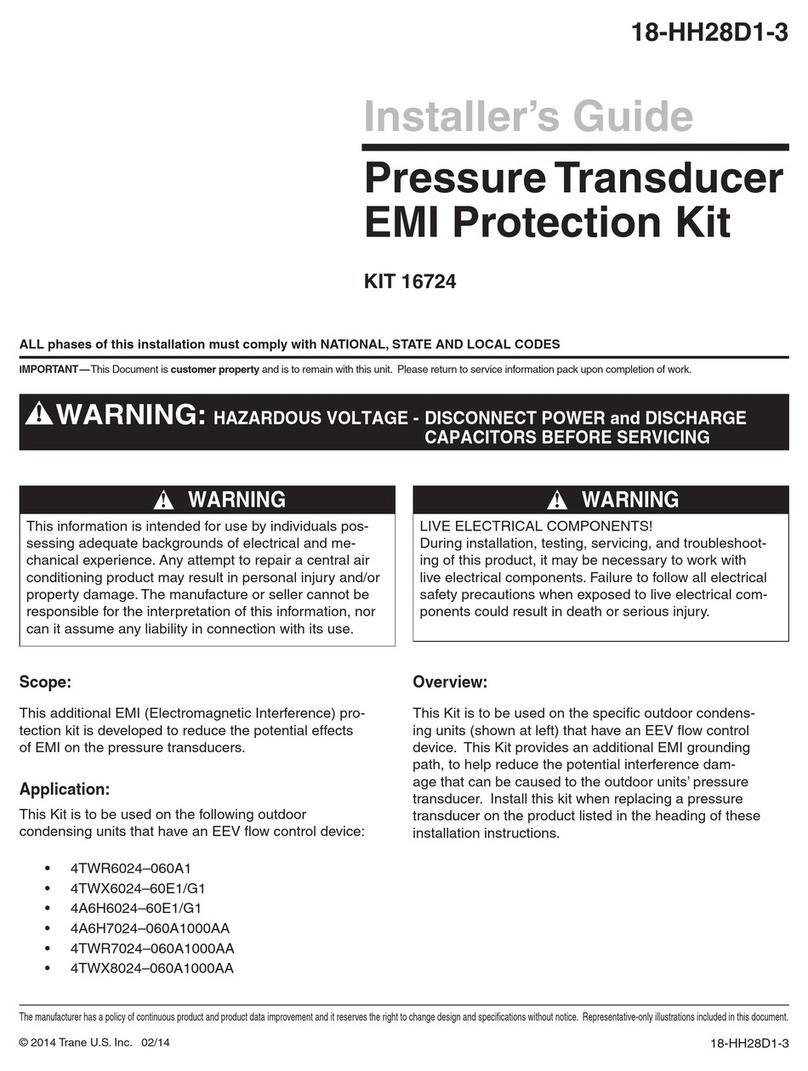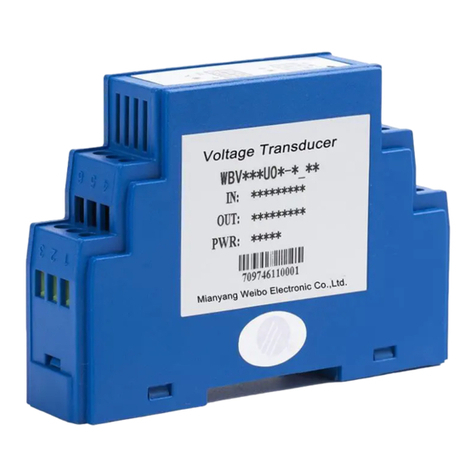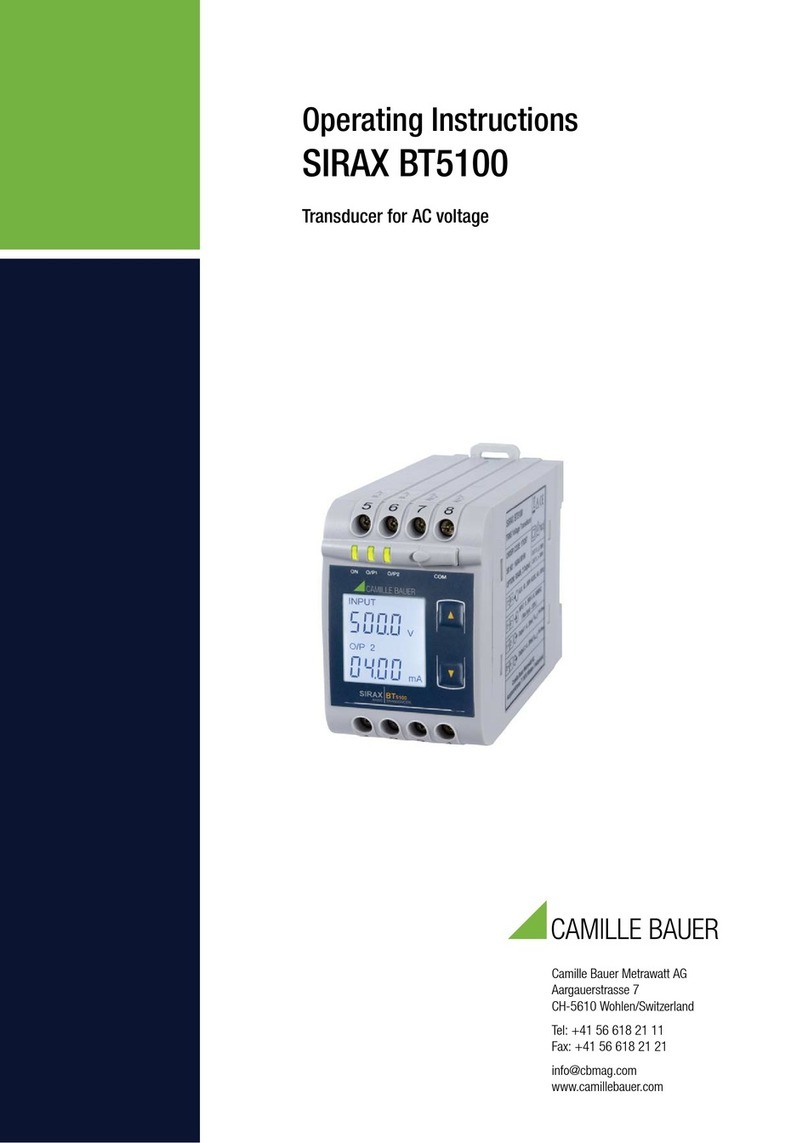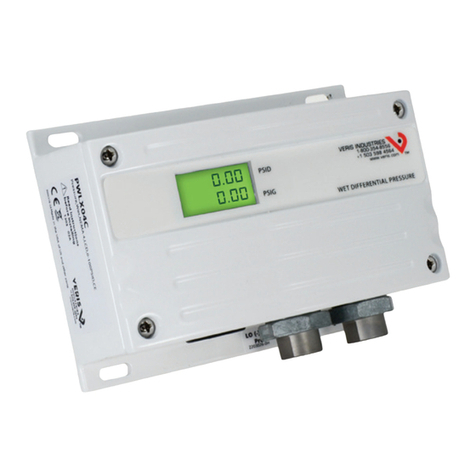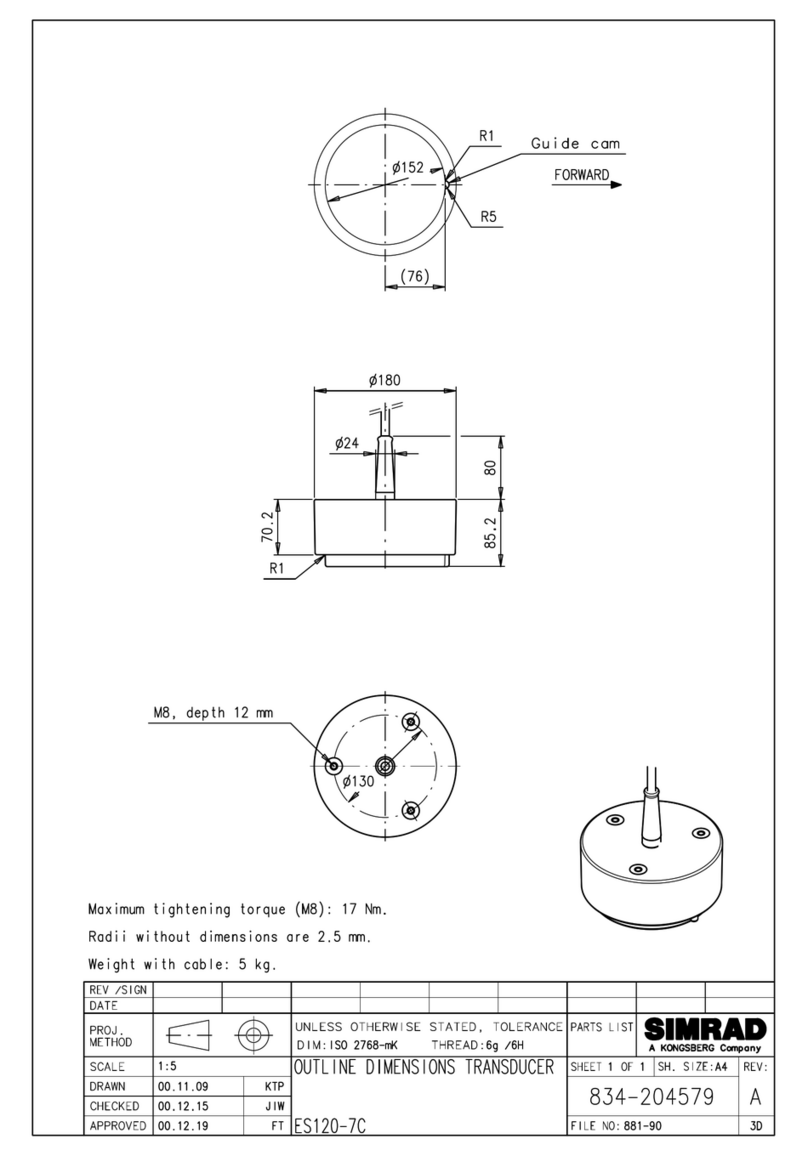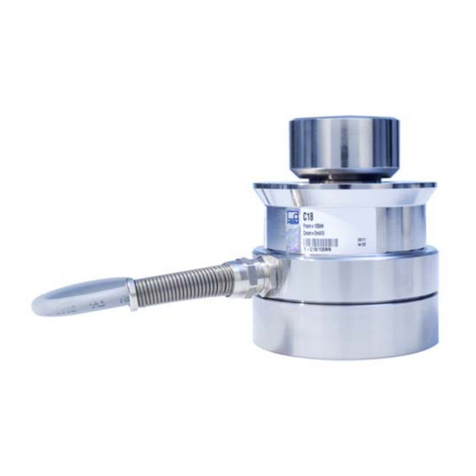
6
pl
Interfejs szeregowy RS-485: adres 1...247; tryb: 8N2, 8E1, 8O1, 8N1
prędkość: 4.8, 9.6, 19.2 kbit/s; protokół transmisji: Modbus RTU;
czas odpowiedzi: 200 ms
Błąd podstawowy przetwarzania ±0,2% zakresu
Błędy dodatkowe w znamionowych warunkach użytkowania:
od zmian temperatury otoczenia (50% błędu podstawowego/10 K)
Przeciążalność długotrwała:150 % Un (we. 400 V, ± 400 V),
120% Un (we. pozostałe),120% In
Przeciążalność krótkotrwała (1 s): wejście napięcia 2 Un (<1000 V)
wejście prądowe 10 In
Znamionowe warunki użytkowania:
- napięcie zasilania : 85..253 V a.c. 40..400 Hz; 90..300 V d.c.
20..40 V a.c. 40..400 Hz; 20..60 V d.c.
- temperatura otoczenia: -20...23...60°C
- temperatura przechowywania: -25...+85°C
- wilgotność < 95% (niedopuszczalna kondensacja pary wodnej)
- pozycja pracy:dowolna
Czas uśredniania – pomiaru (programowalny): 0,2 s (domyślnie 1 s)
Czas wstępnego wygrzewania: 15 minut
Izolacja galwaniczna pomiędzy:
- zasilanie – wejście pomiarowe 3,2 kV d.c.
- zasilanie – wyjście 2 kV d.c.
- wejście pomiarowe – wyjście 3,2 kV d.c.
Zapewniony stopień ochrony wg PN-EN 60529:
obudowa: IP40; od strony zacisków: IP20
Wymiary: 22,5 x 100 x 120 mm Masa: 0,125 kg
Mocowanie: szyna 35 mm wg PN-EN 60715
Moc pobierana < 3 VA
Kompatybilność elektromagnetyczna:
– odporność na zakłócenia elektromagnetyczne wg PN-EN 61000-6-2
– emisja zakłóceń elektromagnetycznych wg PN-EN 61000-6-4
Wymagania bezpieczeństwa według normy PN-EN 61010-1:
– izolacja między obwodami: podstawowa
– kategoria instalacji III (dla wykonania 400 V – kategoria II)
– stopień zanieczyszczenia: 2
– maksymalne napięcie pracy względem ziemi:
- dla obwodu zasilania 300 V; - dla wejścia pomiarowego 600 V –
kat II (300 V – kat III) ; - dla wejścia do programowania 50 V;
- dla wyjścia 50 V
– wysokość npm < 2000 m.
